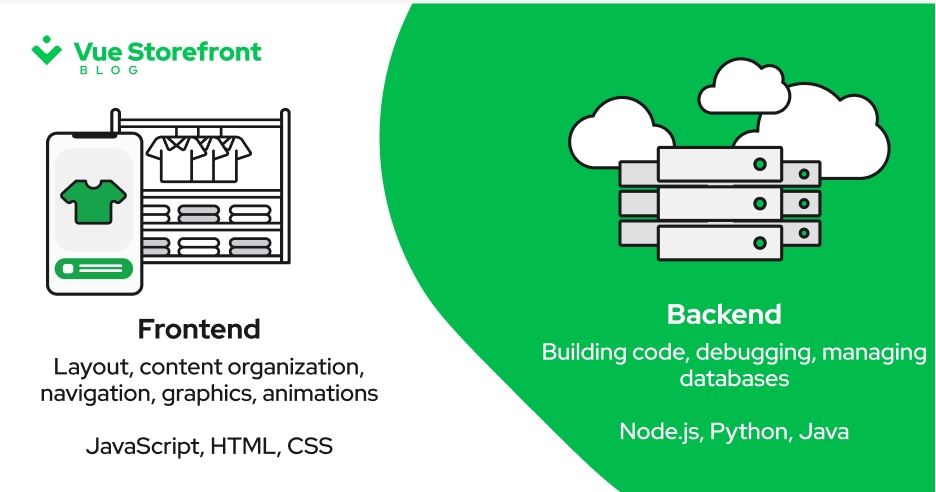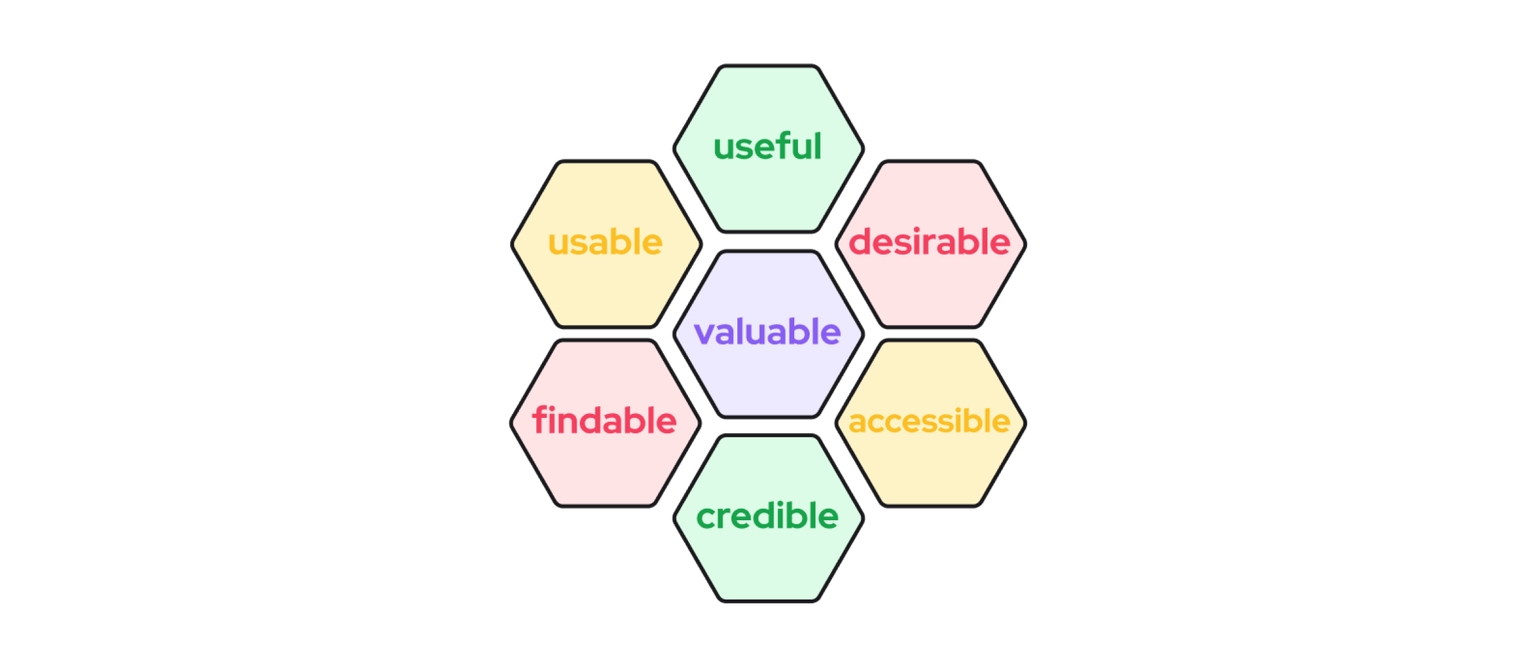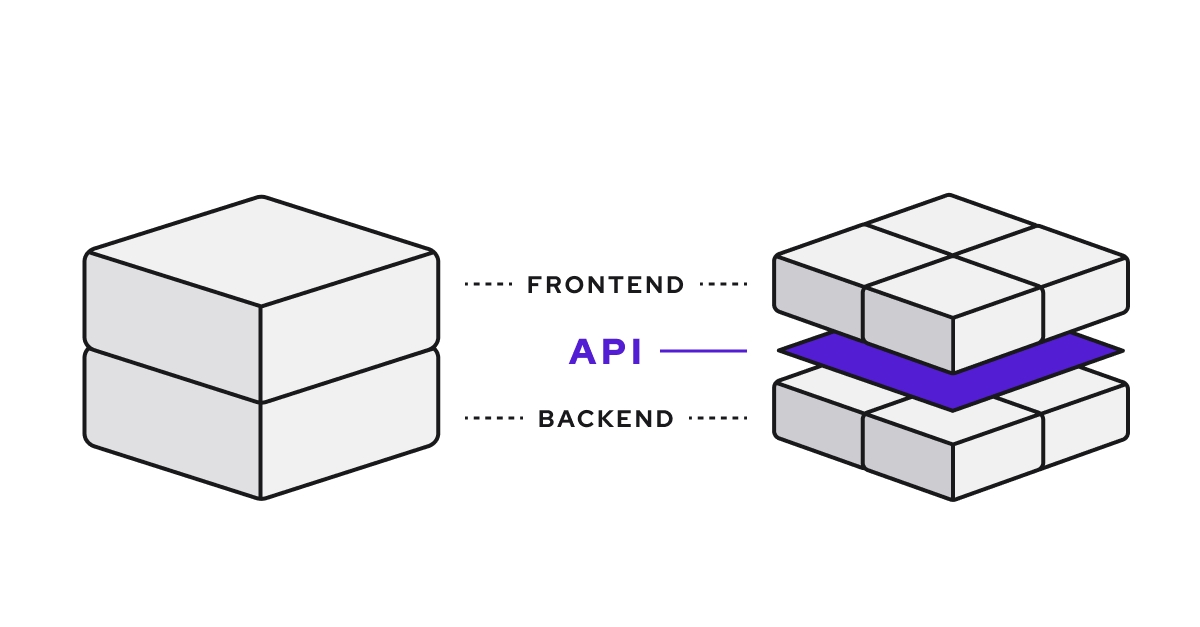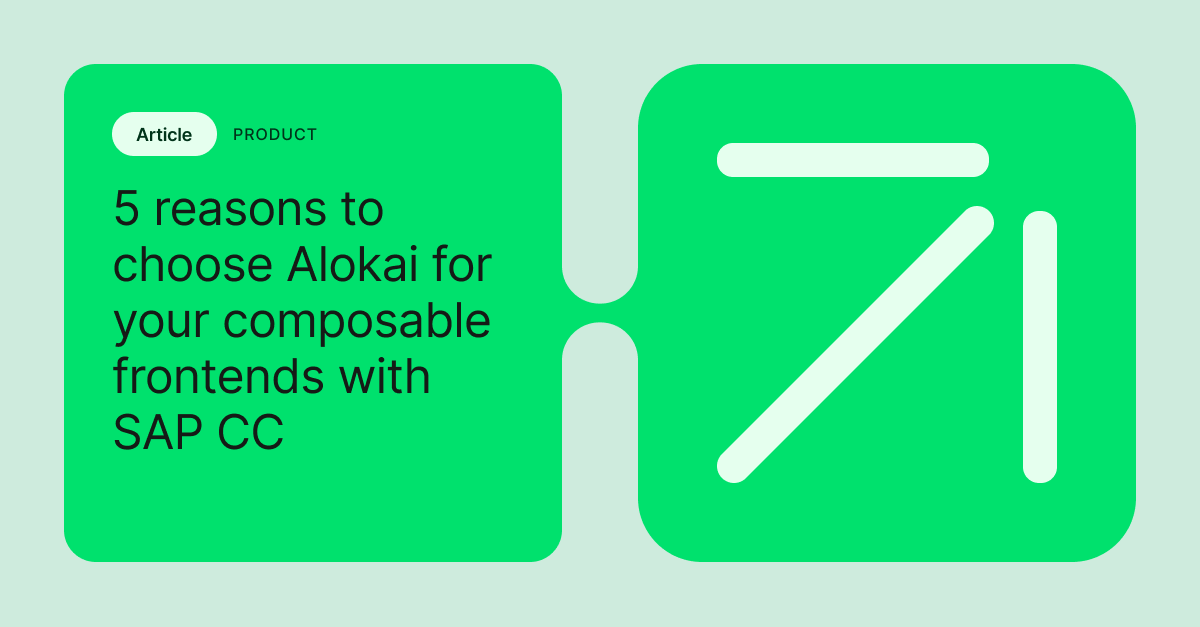Explore by Category:
Frontend
What is Frontend in eCommerce: The Ultimate Guide
You might have heard that an eCommerce frontend is where the entire digital customer journey happens. Companies are investing huge funds into either hiring experienced frontend developers or outsourcing. But what exactly is the frontend, and why should you learn about it?
In this article, we'll talk about all things frontend – what it is, why it's important, and why eCommerce businesses must invest in a high-quality frontend to drive more conversions and revenue.
What is frontend?
Frontend in eCommerce refers to everything the customer interacts with while shopping online. It includes elements like the website's design, fonts, colors, images, and product pages. Like a physical storefront of a brick-and-mortar store, the frontend is a digital storefront that needs to be visually appealing and easy to navigate to maximize customer shopping experience.
Frontend development relies heavily on HTML, CSS, and JavaScript to create an intuitive and visually attractive website. This is why user interface (UI) and user experience (UX) are crucial components of frontend development. After all, it's the first thing people see and interact with when landing on a web store!
Frontend technologies for eCommerce
Whether it’s employing an in-house frontend team or outsourcing, your next frontend project depends entirely on your business needs. And that’s not it, choosing the right frontend technology for your eCommerce project can seem daunting with popular options like Angular, React, and Vue.
To provide more background, here's a quick rundown of the most popular frontend technologies for you to choose from:
Angular.js is a structural framework for building JavaScript-heavy single-page-based web applications. It's used to change HTML from static to dynamic and extend its syntax to render the components of your website more clearly.
React.js is a JavaScript library for building fast and interactive user interfaces for web and mobile apps. It helps provide a cohesive user experience. This library is open-source and reusable component-based.
Vue.js is a progressive JavaScript framework for building frontend UIs. With Vue.js, you can start simple and then progressively add tools and features needed to build a complex web application. Vue.js allows incremental adoption, which makes it easy for developers to integrate it with other libraries.
Frontend technology | Pros | Cons |
| ✅ High performance thanks to a virtual DOM ✅ Large community and ecosystem ✅ Backed by Facebook | ❌ Only the View layer ❌ Frequent updates leading to compatibility issues |
| ✅ A comprehensive frontend solution ✅ Two-way data binding ✅ Popular with large-scale enterprises demanding complex applications | ❌ Complex API makes it challenging for beginners ❌ Performance may be slower ❌ More boilerplate and complexity ❌ Migration issues |
| ✅ The most straightforward frontend framework ✅ Faster loading times and better performance ✅ Easy to integrate with other libraries and existing projects | ❌ Smaller community than React and Angular ❌ Limited resources for enterprise needs ❌ Over-flexibility can lead to less predictable code that is harder to debug and maintain |
Frontend vs. backend – two sides of the same coin

While the frontend of an eCommerce website is designed to create a functional and engaging customer experience, backend is responsible for managing data like products, prices, customer information, and order details. The backend, or the server side of an eCommerce website, makes the frontend function properly.
Backend technologies support frontend presentation by managing data and functionalities. Some common backend technologies include PHP, Python, Java, and popular databases, like MySQL or PostgreSQL. These are considered the backbone of any modern eCommerce website.
Consider the backend as the staff working behind the scenes in a physical store – they ensure all products are available, the prices are accurate, and transactions are smooth and hassle-free. You need both the front and backend working harmoniously to deliver a seamless experience.
Core elements of the frontend layer
When creating a well-functioning frontend of your website, keep in mind the three core elements of the presentation layer:
- web performance
- user experience
- design
They are vital for building a successful eCommerce website with a top-notch customer experience. So we'll look into each in more detail.
1. Web performance
One of the key elements of frontend is web performance . First and foremost, a well-performing frontend is fast and responsive, which is probably the first thing a customer judges once landed on a webpage.
The first five seconds of page loading time are crucial for conversion rates. After those five seconds, conversion rates decrease by 4.42% with each additional second of loading. That's why performance leads to positive conversion optimization and revenue growth.
Keeping Google happy with Core Web Vitals
What's more, excellent speed and website performance translate to good SEO results . Search engines prioritize delivering a positive user experience, and website performance is a significant factor in determining the quality of that experience, which can also be measured by the Google Core Web Vitals. Since the 2021 update, Google has used page and image loading times as a core ranking element for websites.
.png?width=768&auto=webp&format=pjpg&disable=upscale&quality=100&dpr=2)
2. User experience
UX is a part of the presentation layer that focuses on how people use or interact with a product. It adopts the user perspective and answers the question, “How would a first-time customer approach this website?”.
UX design enhances user satisfaction by improving the usability, accessibility, and pleasure provided during the interaction.
There are many components of UX that need to be considered to ensure an excellent user experience. For example, let's take a look at the UX honeycomb made by Peter Morville:

This diagram sums up the foundation for a good UX, reminding us that a solid user experience comes from your design being:
- useful
- desirable
- accessible
- credible
- finable
- usable
- valuable
Remember, a pleasant user experience is what turns visitors into customers.
3. User interface
UI, or User Interface, is what you see when you looks at a digital product, it's the store's overall look and feel. The colors, the typography, the buttons, the images – everything that makes up the visual aspects of a product is part of its user interface.
UI isn't just about aesthetics, though. A good UI design is intuitive and easy to navigate, allowing users to interact easily with your digital store.
But besides that, UI is also where companies focus on fleshing out their branding to ensure that both UI and UX work together to offer quality, usability, and brand identity.
UX, on the other hand, is about how a user interacts with a product. While design is a big part of it, UX is about the entire journey a user takes from the moment they land on a website.
So, while UI focuses on the visual elements of a product, UX focuses on the overall experience. Both are equally important in creating a successful digital product.
Frontend for eCommerce
Now that you know the definition of frontend and its role in enhancing customer experience, let's dig deeper into web building and the presentation layer world.
When it comes to building an eCommerce website, you have two options to choose from: a monolith legacy solution or a composable commerce stack, starting with a storefront.
Let's find out the main difference between the two options and, more importantly, which method serves your business needs best.
Option 1: Monolith legacy platforms (traditional approach)
Since the beginning of eCommerce, traditional legacy platforms ( monolith solutions ) have been the only choice for building an online store. These platforms operate as all-in-one systems, where frontend and backend are heavily linked together in an intertwined architecture.
Legacy platforms are typically older systems that, despite being used today, are considered outdated compared to modern development practices. Monolithic legacy platforms can face challenges like maintenance, updates, and scaling applications – especially compared to more modern modular architectures, such as microservices .
Benefits and challenges of monolith solutions
There was a time when this model worked and offered real benefits. To this day, traditional platforms have all the components needed for an eCommerce website within a single codebase.
Companies can use traditional platforms to quickly deploy eCommerce websites and manage them without any problem by using templates.

However, as the number of online stores grew and the competition became fierce, customers started to expect unique and smooth digital experiences. And that's when the challenges with monolithic systems began.
Monolith, all-in-one platforms were designed to give full control of the system. What they failed to predict is that in modern eCommerce, control should go hand-in-hand with flexibility.
As we know, to be successful in any business, you have to be able to evolve. While monoliths give retailers to quickly introduce changes to the frontend, it can be a real challenge in terms of introducing new technological updates. This can eventually cause them to fall behind user expectations and lose conversions.
Option 2: Headless commerce (new approach)
The headless frontend approach is becoming one of the most significant trends and is already changing eCommerce. This approach is based on the idea of separating the presentation layer (frontend) from the logic of the application (backend), which provides even the most mature enterprises with the agility and flexibility of a startup.

Headless commerce is becoming a future-proof standard for the eCommerce industry. Companies recognize that relying on old methods in terms of technology can have a negative impact on their business, either because of extended time-to-market or higher risks in case of a malfunction.
Headless commerce, in turn, allows to decouple frontend from the backend from the frontend, providing freedom to add, replace, or update components as needed. It is this newly found flexibility that drives the rise of composable commerce as an independent industry.
How can your store’s frontend benefit from going headless?
Today's digital landscape is all about speed, flexibility, and user engagement – and that's exactly why businesses are choosing headless frontend . This approach separates the frontend from the backend, allowing developers to make changes quickly without disrupting the entire system.
It also gives stakeholders the freedom to innovate, experiment with new technologies, and deliver a superior user experience.
Going composable brings numerous benefits like driving web performance, customer satisfaction, and revenue by:
Excellent web performance and mobile-first architecture
Quicker and safer upgrades
Advanced personalization
Enhanced flexibility
And the best part? You don’t have to go big-bang and start a complete re-platforming project. Instead, you can start by replacing just the frontend and reaping the benefits much faster.
The eCommerce frontend and your business goals
We've covered quite a bit in terms of the role frontend plays for customers, but what about companies? Let's look at the business perspective.
The frontend is what your website visitors see and interact with during their purchase process. That’s why the storefront-first approach is important for your business goals. But how can you make sure that your frontend is doing its job well?
Put customer experience first
That’s what we did with this post!
Prioritizing customers should become one of the main goals of improving your eCommerce frontend. A high-quality, fast and mobile-first storefront is essential to deliver amazing customer experience and increase conversions and revenue. In fact, a survey conducted by Segment found that 49% of customers have purchased impulsively after experiencing a personalized experience.
Ensure fast load time
Users can’t stand slow websites. And let's face it, it's true for all of us. The website should load fast and respond quickly (within 1-2 seconds). To put it into perspective, 1 to 5 seconds of load time increases the bounce rate probability by a whopping 90%.
You can have a beautiful and engaging design, but if it's slow to load – you'll lose customers.
Implement responsive design
In the omnichannel era, customers use various devices and operating systems on their buyer journey. According to Statista, the number of global mobile phone users will increase to 7,49 billion . The presentation layer of your website must ensure a smooth purchase process, regardless of the device a user might be using.
Here, take into consideration more than just desktop-vs-mobile differences. Consider tablets, desktops with different resolutions, smart TVs, etc.
Frontend as a Service for eCommerce
To dive deeper into the question of how to properly build your website’s frontend, you might consider Frontend-as-a-Service or FEaaS. Opting for headless commerce is a step to the future success of your online store, but you'll need the right approach to do that. That's where FEaaS comes into play.
Frontend-as-a-Service supplies eCommerce businesses with a one-stop-shop solution for creating performant storefronts from build to launch in one place, with one tool. Instead of hiring a development team or spending time on complex updates to your existing system, FEaaS does it all for you!
FEaaS tools are separate from the commerce backend and focus solely on the frontend experience.
Alokai Frontend as a Service
As a stellar example of a FEaaS solution, Alokai offers pre-built and ready-to-optimize building components, which allow you to customize the storefront instead of developing it from scratch.
Hassle-free integrations with eCommerce platforms like commerce tools , BigCommerce , and Elastic Path , and the API-first approach allows companies to merge Alokai with any third-party tool like a CMS, payment gateway, or analytics.
Combining these services in one product removes the disjointed customer experience and colossal performance problems you may be tired of by now.
In a standard headless approach, you must handle a dozen microservices and the middleware. In order to solve this issue, Alokai takes care of all of those pieces in one place.
Request a demo to discover how Alokai can help you create a fast, mobile-first frontend to drive conversions and revenue.
Wrapping up
Hopefully, now you have a more comprehensive understanding of frontend and its importance to eCommerce businesses. Keeping up with the latest advancements isn’t just the responsibility of your tech teams anymore – all the stakeholders need to be aware of new technologies that could be pivotal for your business strategies. Understanding frontend is the first step in the right direction towards getting ahead in the highly competitive digital marketplace.
Share:
Share:
Frequently asked questions
More in Frontend
Ready to dive in? Schedule a demo
Get a live, personalised demo with one of our awesome product specialists.





















